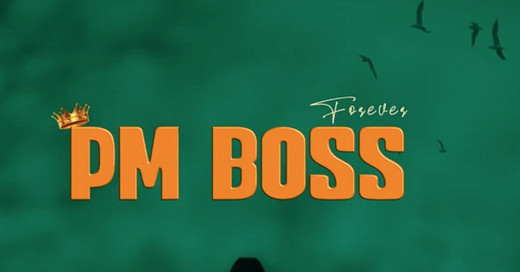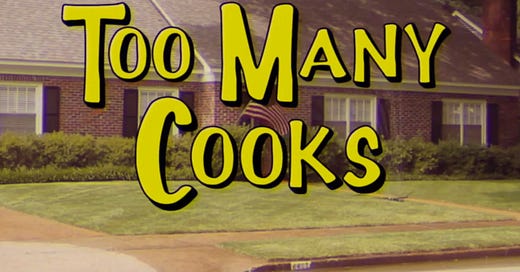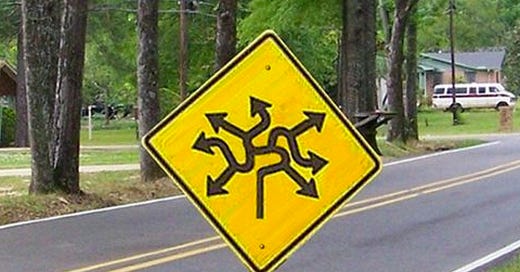
How Does a Head of Product work with a Product-Obsessed CEO?
It sounds difficult, but it's really not!
TL;DR - In my experience as a Head of Product, a product-focused CEO is the best kind of CEO. You’ll have a partner in crime who can help design better products, a good brainstorming partner to solve thorny problems, and a boss who appreciates what PMs do and why they exist.
Are you a CEO who’s hiring your first Head of Product? Have you just accepted a Head of Product role reporting to a CEO who’s obsessed with great products? Don’t worry! In theory this could be a recipe for conflict or butting heads, but in practice I’ve found it to be a huge net positive if you go into it with the right attitude.
When I joined Cantaloupe, I inherited the Head of Product role from the founding CEO. I ended up working for my boss @mdeeps for almost 7 years as we grew from an early-adopter product to a market leader, and from early market traction to $16M ARR and a 4x-to-investors exit. Here’s some advice about the CEO & Head of Product partnership and how to make it successful.
It’s important to recognize *why* a product-focused CEO—who’s typically led Product since the company was founded—now wants to hire a Head of Product. The usual reason: the CEO has gotten so busy that they can’t do a good job as CEO while running Product too. But although the CEO realizes that they need help, they’re also wistful and a little concerned about losing control over the product. They want to continue having a lot of influence on the product, even if they don’t have time to drive it day-to-day.
So with that in mind, the perfect candidate in this role is someone who:
a) Is better at PM in general (strategy, roadmapping, project management, hiring PMs, collaborating with engineers, interaction design, communication, etc.) than the CEO.
AND
b) Is eager to incorporate the CEOs ideas and feedback into the product, especially for the first year or so when the new Head of Product is just learning the space.
Both of these are crucial. If you don’t know more about running a PM team than the CEO does, then your CEO will be thinking “why are you here?” The reason to bring in a Product lead was to lighten the CEO’s load. If you can’t run Product more effectively than the CEO can, then you’re not lightening their load and you won’t last long.
But the second piece is vitally important too. If you’re working for a CEO with strong opinions about the product—and a multi-year track record of managing that product, or else you wouldn’t have taken the job, right?—then don’t expect to be a Steve Jobs character who always knows what’s best and tells everyone else to bugger off. Instead, you need to buy into the CEO’s vision for the product. You need to think of your job as improving and extending that vision, not fixing it or re-inventing it. That doesn’t mean you should be a pushover either. Part of your job will always be defending the company against bad or mediocre product ideas, even if they come from the CEO. But a prerequisite for Head of Product success is being on the same high-level wavelength about where the product should go. If you don’t buy into the CEO’s vision and have a good mind-meld vibe with them during the interview process, then don’t take the job.
But if you have both (a) and (b), then it can be a great experience for both of you. You get to leverage the CEO’s industry knowledge and bottomless well of ideas, which will make you come up to speed a lot faster than if you had to build a product strategy from scratch. You’ll also have a senior partner to bounce ideas off of and to brainstorm with. Especially if you’ve inherited a junior team (or no team!) this informal collaboration can make a huge positive difference in the quality of features you’ll ship.
On the CEO’s end, the biggest benefit is that they can finally start to relax about the product once they know it’s in good hands. It’s impossible to overstate how much CEOs worry about everything. If you can reduce their worry load, that can have a big positive impact on a product-focused CEO’s ability to concentrate on everything else that needs attention. You’ll also help on a practical level because there are typically only a few people in a small company who can stand in for the CEO as a conference speaker, in customer/partner meetings, or anywhere else that a senior person with good communication skills is needed. Finally, just like grandparents love playing with babies before handing them off to mom or dad for a diaper change, having you around means that the CEO can still do fun Product work like brainstorming features while avoiding the less-fun parts like writing specs or bug triage.
Just make sure that you’re always checking in with the CEO to make sure that they’re having the right (from their perspective!) level of input into the product. This might mean spending most of your 1:1 time brainstorming feature ideas. It might be sending the CEO links to early code and getting their feedback. It might be sharing customer insights. It might be interesting data or metrics. And so on. Figure out how your CEO wants to be involved and let them be involved.
Sometimes a CEO might have too much input. You might think that they’re micro-managing. Relax, it’ll pass. The CEO has spent years thinking about this product. Now someone else is driving. This adjustment might take a while. Let it happen. If the CEO is randomizing your team with too much input, then that’s probably a sign you’re not proactively involving them and/or not spending enough 1:1 time with them. If the CEO trusts *you* to make the right thing happen, then they’ll leave your team alone.
What will usually happen is that over time your CEO will get less involved in the product. Not because they don’t care; they still do! But the CEO role—with its core duties of managing VPs, “managing” the Board and investors, recruiting constantly, and ensuring the company stays solvent—is a more-than-full-time job. Most CEOs are too busy to spend much time on anything that someone else is handling well. So just go handle it well.
P.S. - Sales-focused leaders (like our CEO when I was at Splunk) and Engineering-focused leaders (like multiple managers I had at Microsoft) are also great! If I have time, I’ll do another post later with tips for making those relationships run smoothly too.












